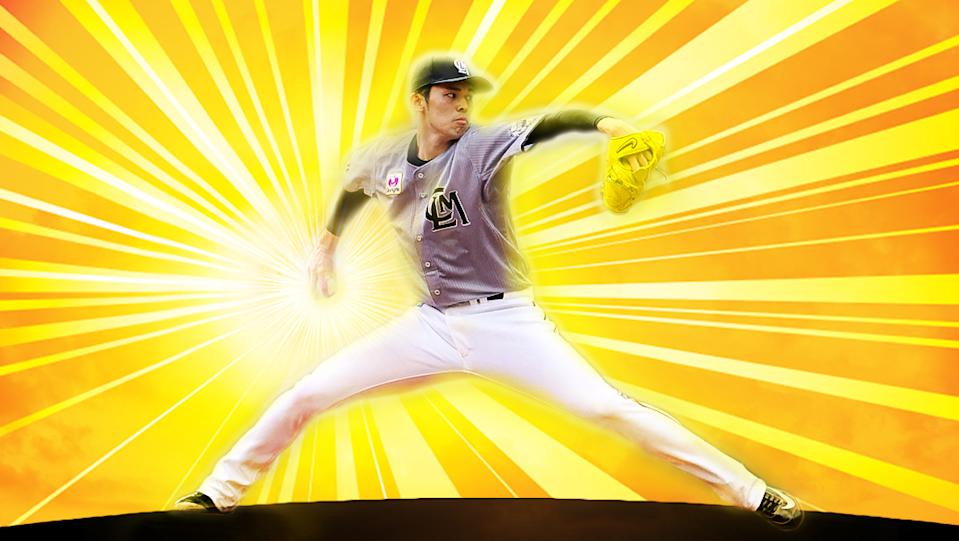Baseball’s most dominant pitcher is only 20 years old. It’s been 17 innings since he last allowed so much as a baserunner. On April 10, he fired a perfect game with 19 strikeouts. In his next start, this past Sunday, he threw eight more perfect innings before his manager removed him from the game. Before you ask, no, he’s not on the Los Angeles Dodgers. He’s not on any MLB roster.
His name is Roki Sasaki, and he plays for the Chiba Lotte Marines in Japan’s Nippon Professional Baseball. At an age when many American hurlers are college juniors, Sasaki is flummoxing the second-best baseball league in the world with triple-digit fastballs and ferocious splitters.
As he piles historic performance on top of historic performance, it’s time to learn about the pitching star rising in Japan.
Who is Roki Sasaki?
Sasaki, a 20-year-old right-hander, has been a source of intrigue and fascination since his high school days.
Originally from northeastern Japan, Sasaki lost his father when the devastating March 2011 tsunami swept away his family’s home. As he grew into a star high school hurler, his fastball was clocked over 100 mph in training with the national youth team, per Jim Allen, a journalist who covers Japanese baseball.
But Sasaki’s high school coach and later the Marines bucked the conventions of Japanese baseball culture by holding him out of important games and ramping him up slowly into professional baseball to protect his arm.
Chiba Lotte won the draft lottery for him in 2019, but Sasaki didn’t pitch at all in 2020, and then appeared in only 11 top-level NPB games last season. So embarking on a full campaign to start 2022 would already have been notable. Instead he has generated international attention by spinning off his league’s first perfect game since 1994 and shattering its records for consecutive batters retired and consecutive strikeouts.


Where does his perfect game rank in baseball history?
It’s probably the best-pitched game modern professional baseball has ever seen.
By game score, created by sabermetrics forefather Bill James to compare single-game pitching performances, Sasaki’s 19-strikeout perfect game rates as a 106. The best nine-inning game score in MLB history is Kerry Wood’s 20-strikeout game in 1998, a 105. Max Scherzer’s 17-strikeout no-no in 2015 is second, at 104.
In simpler terms: None of MLB’s 23 perfect games have involved more than 14 strikeouts.
Within that masterpiece, Sasaki struck out 13 consecutive batters. The MLB record is 10 strikeouts in a row — a mark that Mets legend Tom Seaver held alone for 51 years before it was tied by Corbin Burnes and Aaron Nola in 2021.
And he almost threw another perfect game?
Yes. On Sunday, Sasaki tossed eight more perfect innings. His manager, the former major-league infielder Tadahito Iguchi, pulled him due to an elevated pitch count and signs he was tiring. Sasaki said afterward he had felt some fatigue. The Marines eventually lost the game, which was scoreless when Sasaki departed.
He will enter his next start with active streaks of 17 perfect innings and 52 straight batters retired. The MLB record for consecutive batters retired? Yusmeiro Petit’s 46, a number rendered less glamorous because it was recorded in relief.
What makes Sasaki so good?
Well, for starters, his fastball is averaging 98.9 mph this season. That would have beaten all major-league starters not named Jacob deGrom in 2021. It also comes with an extraordinary amount of movement — though it’s worth noting the Japanese baseball is tackier than its MLB counterpart, which affects how much spin pitchers can impart.
His splitter is the other featured pitch. Sometimes referred to as a forkball, it’s a power pitch that drops off the table as it bears down on hitters. It’s similar to Shohei Ohtani’s favorite secondary pitch, but flies in a bit harder (about 91 mph compared to Ohtani’s 88 mph splitter) and veers off more toward Sasaki’s arm side.
“On any given day, he could be the best pitcher in the world,” an MLB scout told Allen. “His splitter is as good as Shohei Ohtani’s.”
When could Roki Sasaki come to MLB?
Time for some bad news: We probably won’t see Sasaki test his mettle against MLB hitters any time soon. If Sasaki decides he wants to come to America, MLB rules around international players could back him into a complicated choice.
Under the current system, he could:
A) Ask to be posted during his peak in the next few seasons, but sacrifice untold financial guarantees and enter MLB with just a limited signing bonus and a league-minimum salary, as Shohei Ohtani did.
B) Wait until he turns 25, at season’s end in 2027, to age out of MLB’s restrictive policies and negotiate with teams more or less like a free agent. Exciting rookie slugger Seiya Suzuki came over from NPB this offseason and landed a five-year, $85 million deal with the Chicago Cubs.
The great unknown here is whether that particular system for MLB amateurs will remain in place. In striking a deal to end the lockout this spring, MLB and the players union left open the possibility of adopting an international draft that could govern Sasaki’s path to MLB if it were instituted.
The two sides have until July 25 to continue negotiations and decide on that draft. The top pick in MLB’s proposed format would reportedly carry a bonus of $5.25 million — more than double what Ohtani signed for — but we simply don’t know if those details would hold in the eventual plan, when the draft system would take effect or how it would ultimately affect Sasaki’s options.
